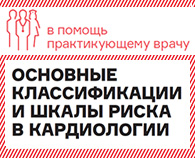Best Treatment for In-Stent Restenosis
What is the best percutaneous treatment for in-stent restenosis (ISR)?
Methods:
The authors performed a network meta-analysis to amalgamate direct and indirect evidence from randomized controlled trials of different strategies for treatment of any type of coronary ISR. The primary outcome was percent diameter stenosis at angiographic follow-up.
Results:
The authors included 27 trials that enrolled 5,923 patients, with follow-up ranging from 6 months to 60 months. Angiographic follow-up 6–12 months after the index intervention was available for 84% of patients. Percutaneous coronary intervention with everolimus-eluting stents (EES) was the most effective treatment for percent diameter stenosis, difference -9.0% versus drug-coated balloons (DCB), -9.4% versus sirolimus-eluting stents, -10.2% versus paclitaxel-eluting stents, -19.2%, versus vascular brachytherapy, -23.4% versus bare-metal stents, -24.2% versus balloon angioplasty, and -31.8% versus rotablation. DCB were ranked as the second most effective treatment, but without significant differences from sirolimus-eluting or paclitaxel-eluting stents.
Conclusions:
The authors concluded that EES is the most effective treatment for ISR.
Perspective:
ISR has become a rare problem with the widespread use of drug-eluting stents, but every catheterization laboratory will still encounter a few patients every year. The use of DCB (currently not available in the United States) is especially attractive for this patient population because it avoids the use of an additional layer of metal within the previously stented artery. This study suggests that EES may be the preferred stent for this indication, but that might have to do with the fact that the other second-generation stents have not been studied for this indication in any meaningful fashion. However, in the absence of data to the contrary, it might be reasonable to use EES as the preferred stent for treatment of ISR until a better treatment option is identified.
Source: www.acc.org






